What is a Flatbed Trailer & All the Different Types of Flatbed Trailers
The flatbed trailer primarily serves the purpose of transporting containers. Sometimes, you require an over-the-road service for higher, broader, or heavier cargo than what fits in a typical dry van. A flatbed trailer is the best option when freight can be challenging to load. Customers can customize 2-axle, 3-axle, or 4-axle container flatbed trailers based on the weight and type of commodities.
What Is a Flatbed Trailer?
A flatbed trailer is an example of an open deck device with no sides or roof mainly used to transport large, heavy, bulky goods like machinery, construction supplies, mobile homes, container, dry cargo and aircraft. It is significantly simpler to load and unload cargo because of the flat design of the body.
The exposed body must not make the cargo transported with a flatbed truck susceptible to rain. The trailer is one of the most popular because of its flexibility. The trailer's length typically falls between 48 and 53 feet. Flatbed trailers and flatbed trucks are similar in terms of functionality.
A flat-shaped trailer, known as a flatbed trailer, is used to transport products with specific requirements.
Manually tying down loads with ropes serves to retain them. Tie-down hooks are located around the edge of a flatbed truck's bed and are tightened using methods like a trucker's hitch. Weather protection is optionally given by manually covering the load with a sheet and securing it with ropes. This slowdown, labor-intensive manual loading methods call for some caution and expertise. Furthermore, there is a chance that a load that was not correctly secured could come loose while in motion, which frequently causes accidents or traffic jams. Moreover, such a load has very little theft protection. Due to how slowly these loads may be loaded, enclosed truck designs with increased efficiency were created.
History of Flatbed Trailer
Alexander Winton created the first semi-truck in Cleveland, Ohio, which marks the beginning of the history of heavy haul. In 1896, Winton entered the "horseless Alexander Winston carriages" or automobile business.
As most road freight moved to containers or pallet loads transported on larger, more efficient trailers, flatbeds became increasingly rare in the 1980s. These trailers were optimized for quicker forklift loading. Containers are transported on specialized semi-trailers with twist locks in the corners to keep the container in place. Pallet loads are transported in either curtain-sided or box bodies that are loaded through the sides or the back. Both offer weather protection for goods and can be packed rapidly with ordinary loads, but they are less flexible for loading a single large load by crane.
Around the same period, the haulage and logistics industry experienced a shift as a more significant percentage adopted a more regular nature, such as standard daily loads of boxes of equal sizes from a distribution center to a supermarket, as compared to the random, ad hoc nature of earlier road transport.
While they are still in use, the flatbed trailer is now utilized for more specialized cargoes like industrial material or lighter unusual loads like machinery, timber loads, drywall, or any load that needs to be forked without the help of a loading dock.
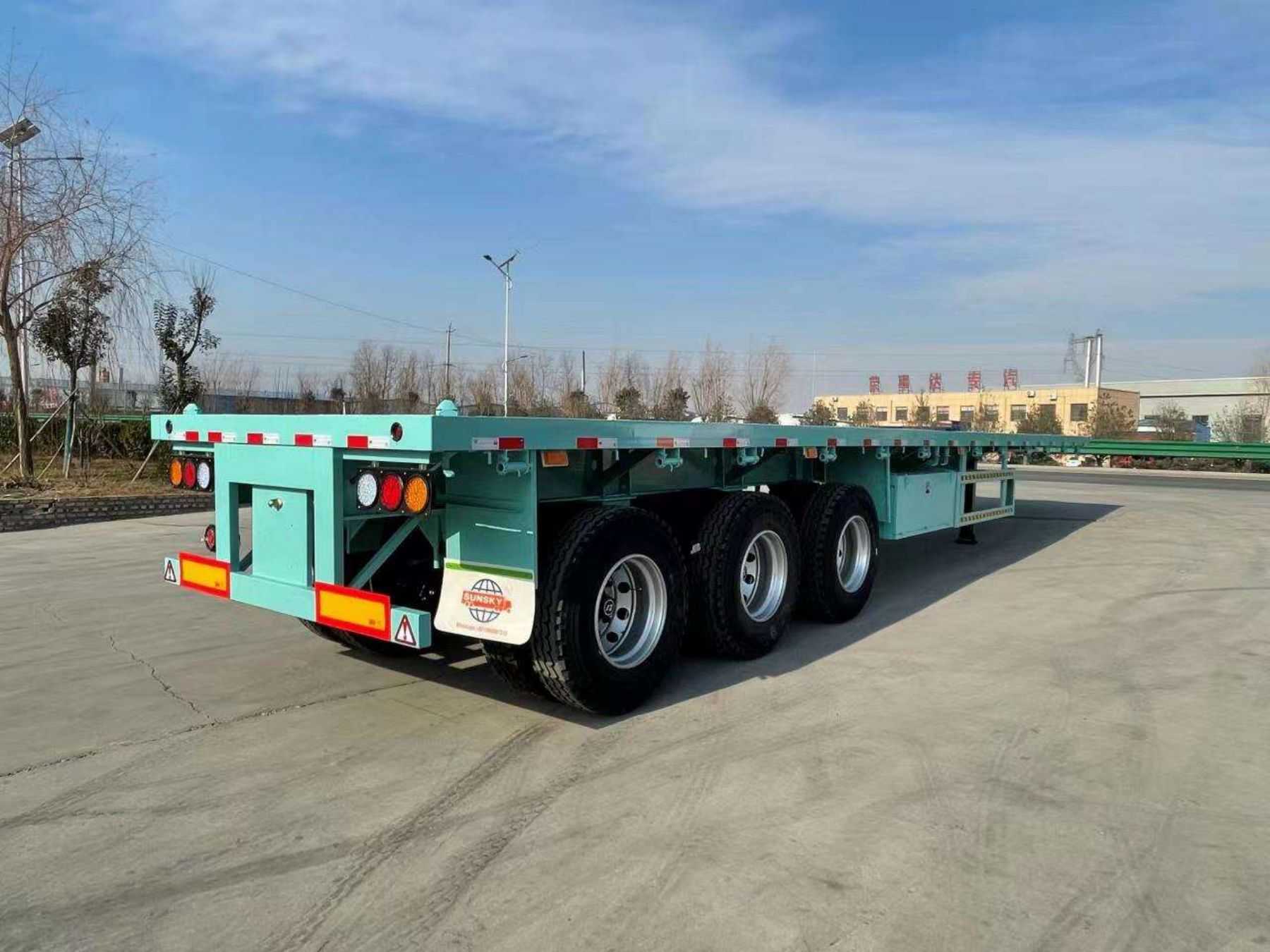
Why Use a Flatbed Trailer Over Other Trailer Types?
When you think of cargo operations by road, you probably picture a normal semi-truck towing an enclosed trailer. Other trailer types, such as livestock carriers and flatbeds, are also essential for road cargo transportation, even though these rigs are suitable for a large portion of the cargo that travels on American roads.
Flatbed trailers might be an excellent option for quickly moving a lot of material. Because they can load quickly and carry them with fewer journeys, they are a very efficient way to transfer your belongings. We go through four main reasons for choosing a flatbed trailer over other trailer types in this article.
- Stability
- Safety
- Versatile
- Compliance with Height & Weight Restrictions
Stability
Numerous variables affect the stability of trailers while being towed. Although each aspect has an impact, none of them can determine whether a trailer will be stable or not. Many factors affect a trailer's stability and safe towing; all must be considered, but only a few are crucial. Wheel and axle alignment, axle placement, brakes, calibration, and overall strength are important construction components. A flatbed trailer is the best for stability, especially when transporting bulkier cargo. The base of the support can be improved to increase strength.
It is always preferable to use a flatbed trailer because of the heavy weight of construction equipment and the need to transport it from one job site to another. These are much safer when transporting these materials on highways with big trucks or even when traveling off-road in bad weather because they are more stable than other trailers.
Numerous materials are needed for construction projects, such as piping, rebar, and lumber for buildings or fence posts. Transport on a flatbed is frequently used for prefabricated building frames made of metal and wood with ready-to-use doors. Instead, heavy concrete blocks might be transported to make them simpler to relocate after work is finished.
Safety
These trailers are specifically designed to handle heavy loads. The trailers are constructed from high-quality materials that can withstand pressure up to 700 mph. As a result, the security of the equipment and goods is guaranteed throughout the shipping process.
Because flatbed trucks lack walls or other perimeter obstacles, they are better equipped than any other trailer to transport massive loads. The all-sided access enables more thorough tethering, improving safety for the truck driver and any cars they may drive along the route.
Many of the most oversized road-legal loads, including parts for windmills, mobile homes, and industrial or agricultural gear, are only suitable for flatbed trailers.
Versatile
Flatbed trailers are some of the market's most adaptable trailers. They can handle almost any type of freight with the correct configuration. They are not just simple to load because they are forklift accessible from all directions, especially when loading bulkier items of goods. No lip needs to be lifted so that you may load in any direction. When you know what you're doing, it's simple to strap down loads, and it's simple to accommodate oversized loads.
When you select a flatbed trailer, you can move your cargo around during the loading process as necessary. This makes using a flatbed pack a trailer full of numerous items of different shapes or sizes.
Compliance with Height & Weight Restrictions
Some countries have regulations that limit the maximum height of cargo that can be transported. The legal restrictions on shipping in the United States are well known and largely uniform from state to state.
Typically, the legal maximum load width is 8.5 feet (102 inches), and the legal maximum load height is 102 inches. The maximum length and weight are usually 48 to 53 feet and 46,000 pounds, respectively. Although some trucks could be able to tow more weight, 46,000 pounds is often the limit.
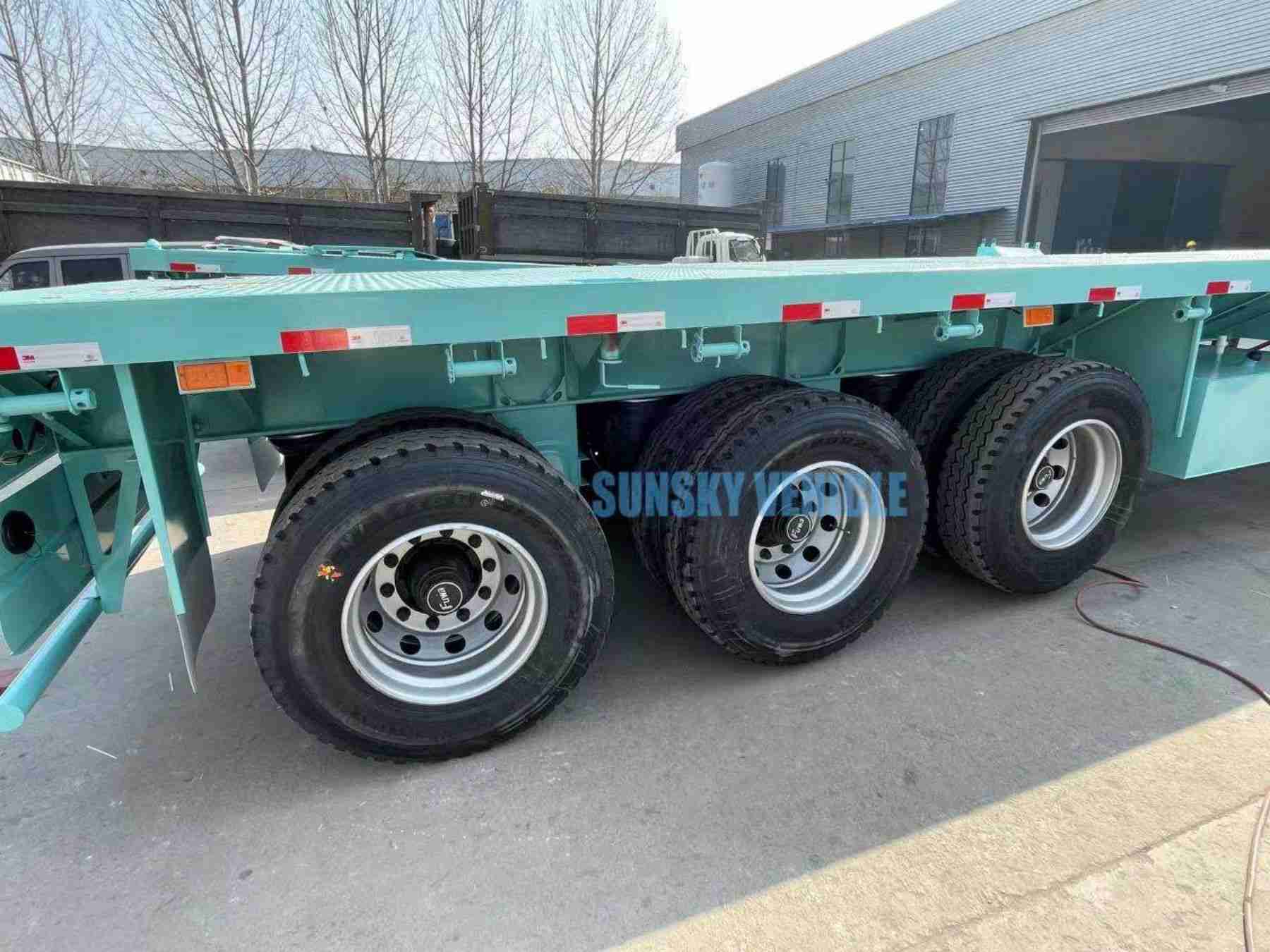
Different Types of Flatbed Trailers
Flatbed trailers offer a wide range of possibilities. The appropriate trailer for your shipment can be chosen with the assistance of an experienced logistics provider, but being familiar with the most popular trailers and their capabilities can help you understand what flatbed service entails.
Flatbed trailers might be an excellent option for quickly moving a lot of material. They can load quickly and carry your items with fewer journeys, making them a particularly efficient means of transportation. Beyond the standard flatbed, which is entirely flat from front to back, there are many flatbed trailer kinds with distinctive flatbed trailer dimensions that set them apart from one another.
Although these are estimates, the maximum cargo dimensions and weight for each trailer are mentioned here. The figures below should not be utilized for precise loading calculations but as an estimated load and freight planning guideline.
- Standard flatbed trailer
- Lowboy flatbed trailer
- Step-deck trailer
- Stretch single drop deck
- Removable gooseneck trailer
- Extendable flatbed trailer
- Interlink/super link flatbed trailer
1. Standard Flatbed Trailer

The most popular, most fundamental, and least expensive kind of flatbed trailer is a standard flatbed. The most typical kind of flatbed is this one. It resembles a box trailer without doors, sides, or a roof. It is widely utilized to convey building materials, machinery, and steel products.
A typical flatbed can frequently be modified to match dock height because the trailer and loading dock dimensions can change. They might also have a ramp to make loading from the ground easier.
What Does Standard Flatbed Trailer Use For?
The 48 feet that may be used to load dry cargo or container on a standard flatbed trailer make it incredibly flexible. Although they are less frequent, some basic flatbeds are 53 feet long. Flatbeds are best used when the goods require side or crane loading or when the shipping or receiving destination lacks a dock accessible for loading and unloading.
Max. Freight Weight:
Standard flatbed trailers can carry up to 48,000 lbs. of freight.
Max. Freight Dimensions
- Maximum Standard Flatbed Trailer Length: 48 to 53 feet
- Maximum Standard Flatbed Trailer Width: 8.5 feet
- Maximum Standard Flatbed Trailer Height: 60 inches
2. Lowboy Trailer
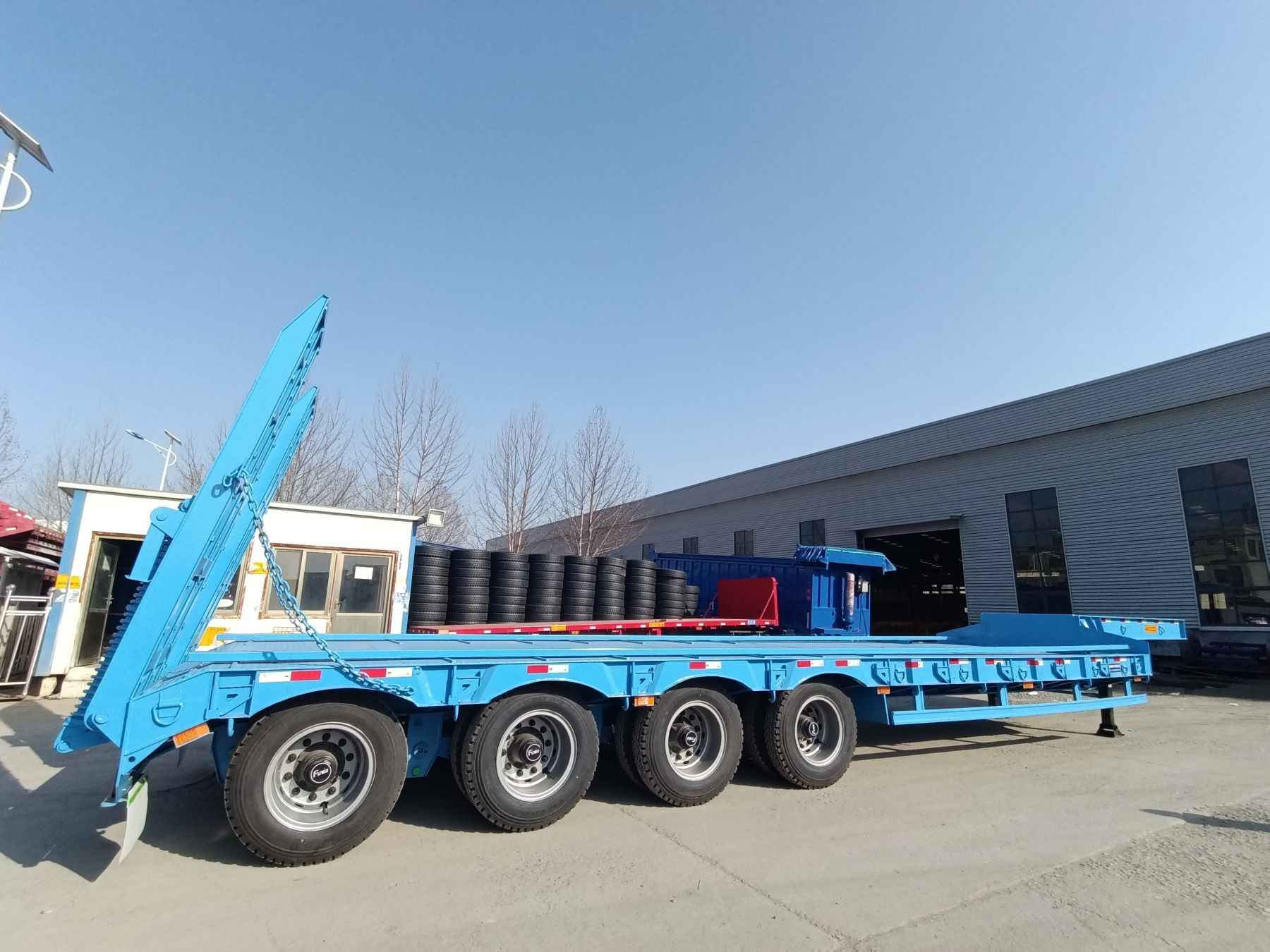
A lowboy trailer is a unique type explicitly created to transport large or heavy items. A non-powered trailer known as a low bed trailer is frequently used to transport freight. For instance, lowboys are commonly used to transport substantial construction and industrial machinery. Lowboys can transport these loads because of their low height.
What Does Lowboy Trailer Use For?
As already mentioned, low bed trailers are frequently utilized to transport bulky or heavy products. All around the United States, they are commonly used to move significant commodities like construction equipment. Extra safety concerns must be made when employing lowboy trailers because they are used to carrying such vast loads.
Max. Freight Weight:
In essence, a lowboy with two axles can transport about 40,000 pounds. Following are the maximum weight and size restrictions:
- Lowboys A 2-axle Lowboy Trailer's maximum weight is 40,000 pounds; Depending on how many axles are used, the overall weight could reach 95,000 pounds (weight of the trailer and weight of the load added together).
Max. Freight Dimensions
- Maximum Lowboy Well Length- 24 ft – 29.6 ft
- Maximum Lowboy Well Height- 18 in – 24 in
- Maximum Legal Width- 8.5 ft
- Maximum Legal Freight Height- 11.5 ft – 12 ft
- Maximum Legal Overall Load Height- 14 ft
3. Step Deck Trailer
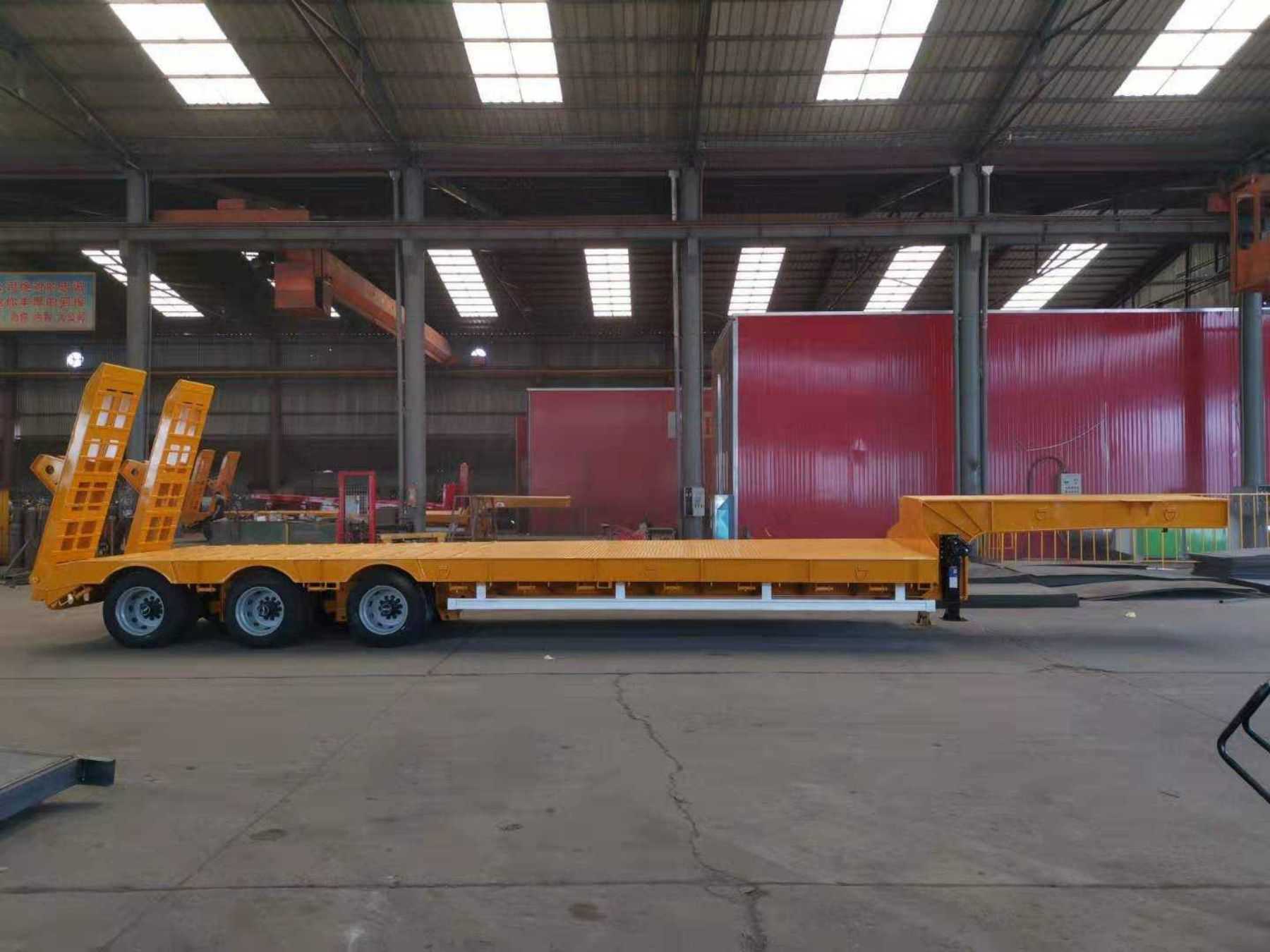
A common alternative for the traditional flatbed is a step deck trailer, sometimes called a "drop deck" trailer. It has two-bed parts with different heights: an upper deck initially taller at the top descends to a lower deck closer to the ground.
Step deck trailers are adaptable since they can carry higher loads at their lowest position. While the height adjustments give more possibilities for freight, that extra bit of clearance can help. These trailers are made expressly to transport and carry cargo that cannot be moved or carried on a typical flatbed, typically because of height restrictions.
What Does Step Deck Trailer Use For?
Large equipment available in various sizes and shapes can be easily transported with step deck trailer haulage. When towing a step deck trailer, you can move anything up to 11 feet tall, but flatbed trailers can only tow objects up to 8 feet tall.
The advantage of employing step deck trailers to transport machinery is that the lower deck height can accommodate up to 41" greater cargo height than a flatbed trailer.
Max. Freight Weight:
The following are the maximum permitted weight and dimensions for a Step deck trailer:
- The maximum freight weight for step decks is 48,000 lbs.
- Maximum freight for tri-axles is 65,000 lbs.
Max. Freight Dimensions
- Maximum Lowboy Well Length- 24 ft – 29.6 ft
- Maximum Lowboy Well Height- 18 in – 24 in
- Maximum Legal Width- 8.5 ft
- Maximum Legal Freight Height- 11.5 ft – 12 ft
- Maximum Legal Overall Load Height- 14 ft
4. Stretch Single Drop Deck
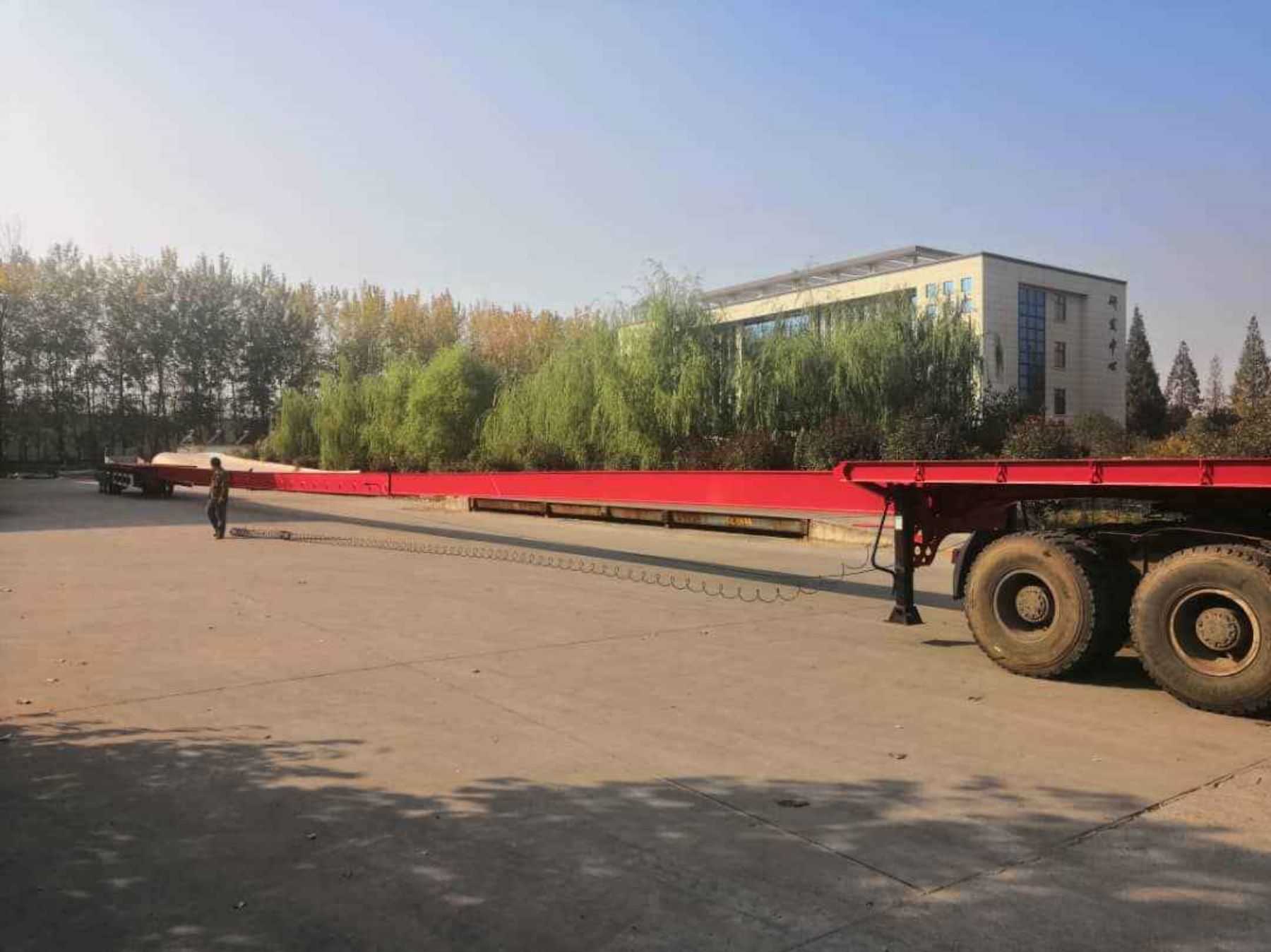
Similar to an extensible flatbed, this trailer also works well for longer loads since it has an extended step deck that reduces overhang. However, because of the lower drop deck, the trailer can carry taller freight, making it ideal for more critical things.
Stretch single drop deck Due to length limits, trailers are specifically made to transport and convey cargo ships that are too lengthy for a regular step deck. Additionally, it offers assistance in preventing overhangs.
What Does Stretch Single Drop Trailer Use For?
Stretch single-drop deck trailers can utilize freight longer than usual, up to 63 feet long, and slightly taller, up to 10 feet tall.
Max. Freight Weight:
The following weights and measurements are legal:
- Stretch Single Drops Trailer the maximum weight for freight is 45,000 lbs.
Max. Freight Dimensions
- Max Stretch Single Drop Trailer Length- Main Deck 35 ft – 63 ft
- Max Stretch Single Drop Trailer Width- 8.5 ft
- Max Stretch Single Drop Legal Freight Height- 10 ft
5. Removable Gooseneck Trailer (RGN)

An excellent trailer for tall and long cargoes is the Removable Gooseneck Trailer or RGN. Removable gooseneck trailers, sometimes known as detachable gooseneck trailers, are called RGN trailers. The front deck of the trailer (with slope) will touch the ground so you can have a shallow slope making the cargo more straightforward for machines to climb on. It is a form of lowboy trailer with a hydraulic gooseneck that can be separated from the trailer body. Another form of front-loading trailer that may also be loaded from the front side of low bed trailers is the folding gooseneck trailer.
What Does Removable Gooseneck Trailer Use For?
This trailer has a removable front that detaches to make a ramp for more straightforward loading. Additionally, an RGN has a remarkable weight capacity and can transport up to 150,000 pounds of cargo. This weight can be carried by it because it can bring huge, bulky freight with up to 20 axles, ranging from 3 axles. RGNs are more expensive because they are often used in unique circumstances.
Max. Freight Weight:
An RGN or removable gooseneck trailer's legal weight and dimensions are as follows:
- Depending on the axle configuration, RGN's minimum freight weight ranges from 44,000 to 150,000 lbs.
Max. Freight Dimensions
- Maximum Removable Gooseneck – RGN Well Length- Main Deck 29 ft
- Maximum Removable Gooseneck – RGN Well Width- 8.5 ft
- Maximum Removable Gooseneck – RGN Legal Freight Height- 11.6 ft
6. Extendable Flatbed Trailer
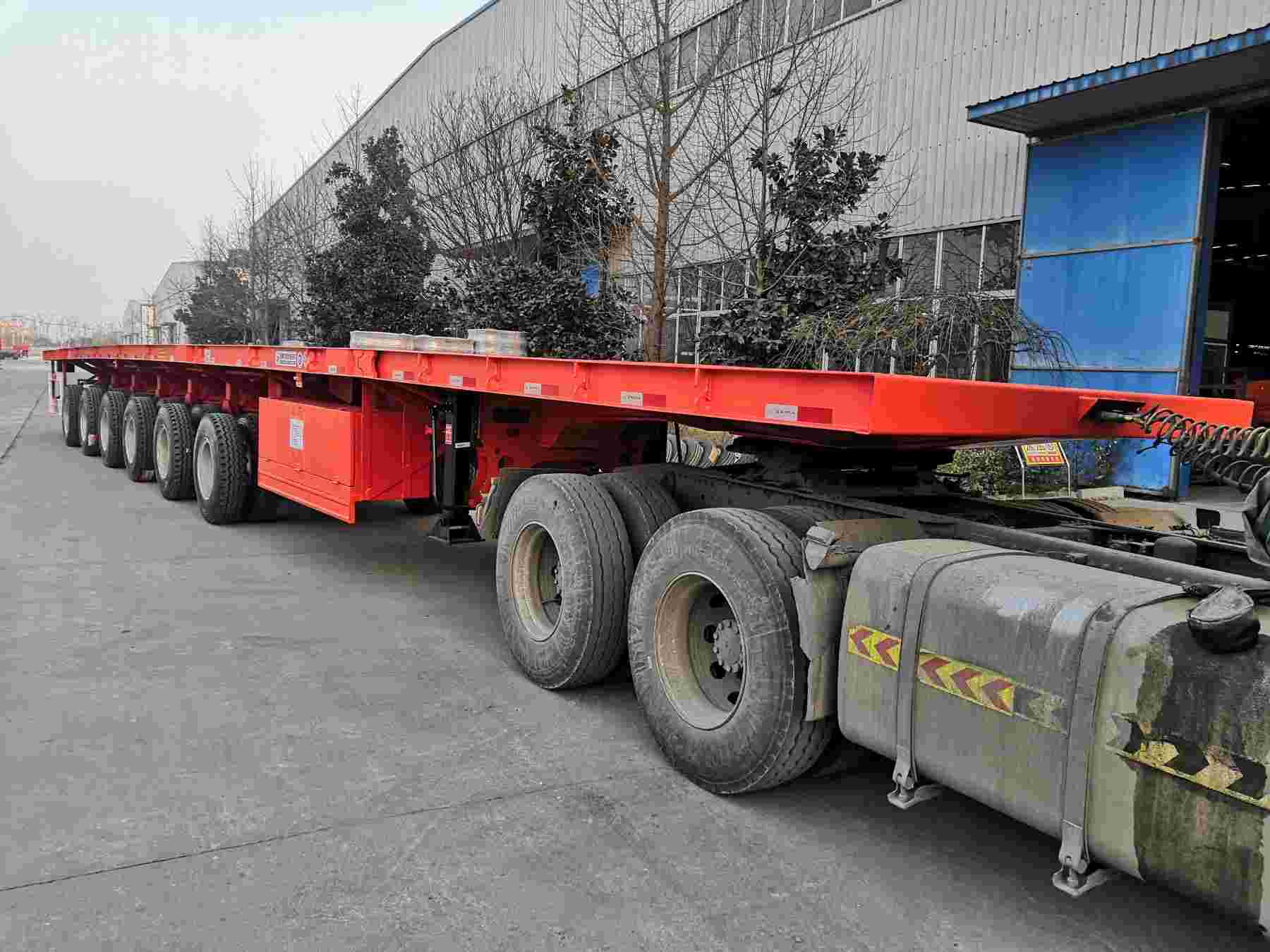
These flatbeds, also referred to as stretch flatbeds, are expandable. Extendable flatbed stretch trailers are superior to other trailer kinds and sizes in terms of versatility. Extensive flatbeds are the best option for unusually long freight and cannot fit on a conventional trailer. A more extended load can be supported by an extensible trailer by adjusting it, preventing overhanging cargo for safer shipping.
What Does Extendable Flatbed Trailer Use For?
They are primarily used to transport goods or freight that are too long to fit on a typical trailer type. Additionally, it is a style of trailer that offers the most stability, preventing the danger of overhanging cargo.
Max. Freight Weight:
This particular trailer model has a maximum 43,000-pound weight capacity.
Max. Freight Dimensions
- Maximum Extendable Flatbed Trailer Length- 48 ft – 80 ft
- Maximum Extendable Flatbed Trailer Width- 8.5 ft
- Maximum Extendable Flatbed Legal Freight Height- 8.5 ft
7. Interlink/Super Link Flatbed Trailer
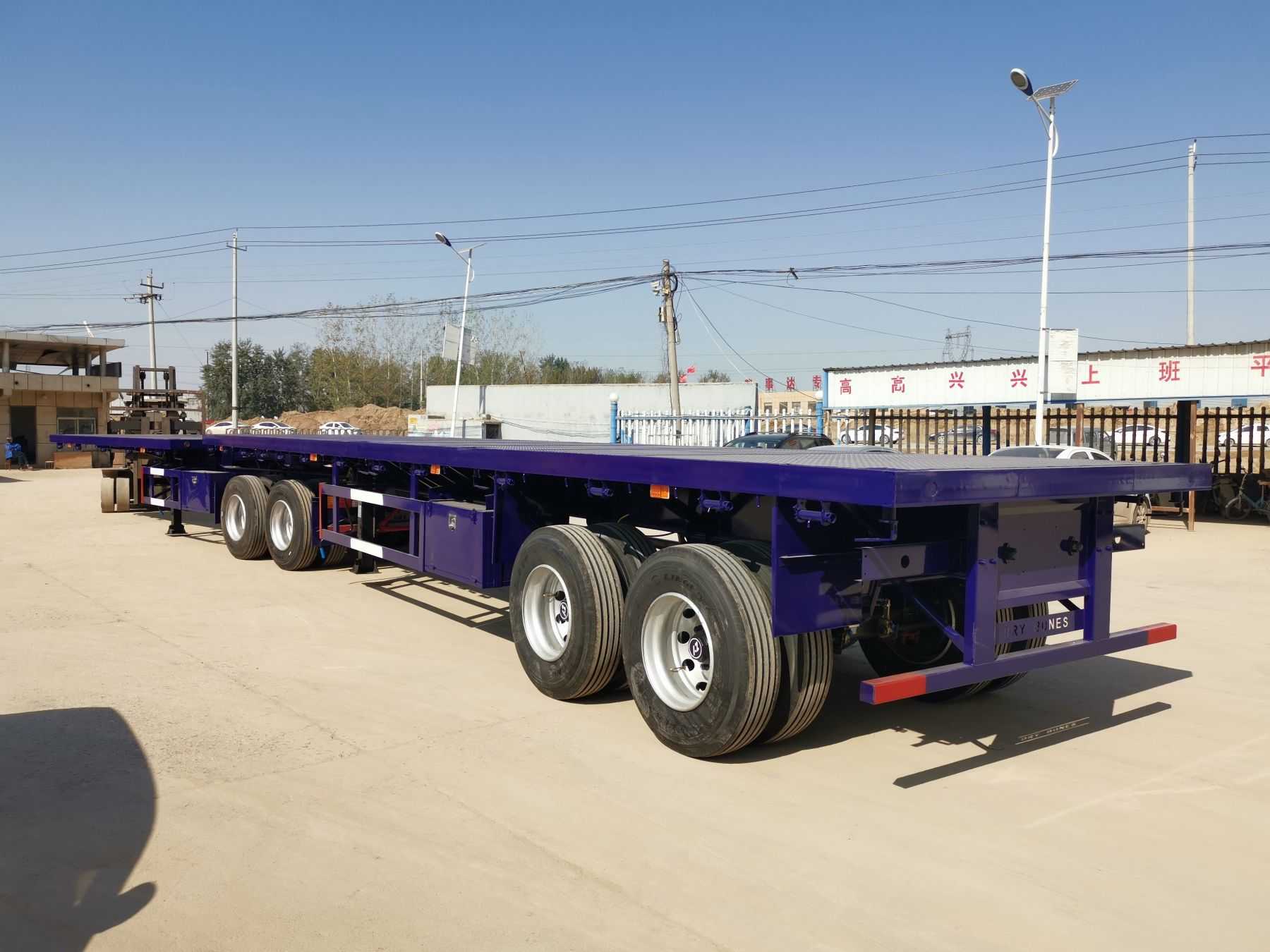
Interlink flatbed trailer is another name for the super link flatbed trailer. In its simplest form, the interlink trailer comprises two flatbed trailers: a 20-foot front trailer and a 40-foot rear trailer. You can think of it as a fusion of two flatbed trailers of various sizes.
The improved suspension ensures that the load is safely fastened during transit to avoid any harm. According to traditional loading techniques, this type of trailer can typically be moved and loaded fast and efficiently. It is practical to load and unload the goods to accommodate clients' needs. Then you can carry a variety of products.
What Does Interlink/super link Flatbed Trailer Use For?
The use of an interlink flatbed trailer is to transport containers and cargo, such as steel, timber, grain, and other bulk products, as well as bagged cement and grain.
Max. Freight Weight:
The following weights and measurements are legal:
- Interlink/super link flatbed Trailer, the maximum weight for freight is 100 tons.
Max. Freight Dimensions
- Maximum Interlink/Superlink Flatbed Trailer Length: 6.5m length for 20ft, and the rear trailer is 12.5m length for 40ft
- Maximum Interlink/Superlink Flatbed Trailer Width: 2.5m
- Maximum Interlink/Superlink Flatbed Trailer Height: 8.03 feet
Things to Pay Attention to When Buying or Hiring a Flatbed Trailer

The logistic sector requires you to assemble various components to move items from one location to another. When considering entering the trucking business, your first thought is probably where to find the most fantastic flatbed trailers. To choose the best trailer for your needs as a business, you must spend a lot of time and money. Finding the ideal trailer for your needs requires study, and doing so will aid in the expansion of your company. These essential aspects should be taken into account when purchasing a flatbed trailer.
Investing in the best flatbed trailer for your company can boost production, reduce pickup and delivery times, improve safety, and make it easier for your drivers to handle the loads. This blog will assist you in choosing the ideal trailer to meet your operational needs.
- Material
- Suspension Options
1. Rigid Suspension
2. Mechanical Suspension
3. Air Ride Suspension
4. Single Point Suspension - Tires
- Tube Tires
- Tubeless Tires
- Carrying Capacity
- Budget
Material
The material used to construct flatbed trailers is essential to give top priority when purchasing. While some flatbed trailers are made of aluminum, others are steel. Aluminum trailers are lightweight, resistant to rust, and reasonably priced. On the other hand, steel trailers provide excellent hauling capacity and are simple to repair. This means that aluminum is preferable if you plan to work from a location where metal is subject to rusting. However, a steel trailer would be preferable if you wanted additional towing capacity over an aluminum trailer.
Suspension Option
The suspension is a crucial component of a flatbed trailer connecting the chassis to the frame.
The suspension system transmits the supporting force, braking force, driving force, etc., of the vehicle. It can also guarantee an automobile's stability and decrease the negative consequences of bad roads.
Independent and non-independent suspensions are the two main categories of suspensions. Non-independent suspensions are utilized on semi-trailers due to the demand for a high carrying capacity.
Check the spring hangers and leaf springs when inspecting. Any cracks or fixes suggest that the trailer has previously been overloaded. They might also indicate a change in the axles brought on by a rapid collision with anything on the ground. Buying a trailer with unbalanced axles is problematic because it leads to tire wear.
There are four types of typical flatbed container trailer suspensions:
- Rigid Suspension
- Mechanical Suspension
- Air Ride Suspension
- Single Point Suspension
1. Rigid Suspension
An axle connects the left and right wheels, and the body chassis directly affects the Axle, creating a rigid suspension. Although the shock-absorbing capacity of this type of Axle is relatively low, the swing of the balance beam compensates for longitudinal road surface irregularities to keep the front and rear axles' relative balance.
Low-axis semi-trailers that travel at low speeds and carry cargo frequently employ these suspensions, which are used relatively infrequently overall.
2. Mechanical Suspension
Our standard leaf spring serves as the mechanical suspension. The leaf spring, suspension support, connecting rod, U-bolt, and other pieces comprise most of the structure. The body's longitudinal force directly strikes Axle.
The fact that this suspension is affordable, dependable, and simple to maintain is its most significant benefit.
More than 80% of regular flatbed trailers use a leaf spring balanced suspension.
3. Air Ride Suspension
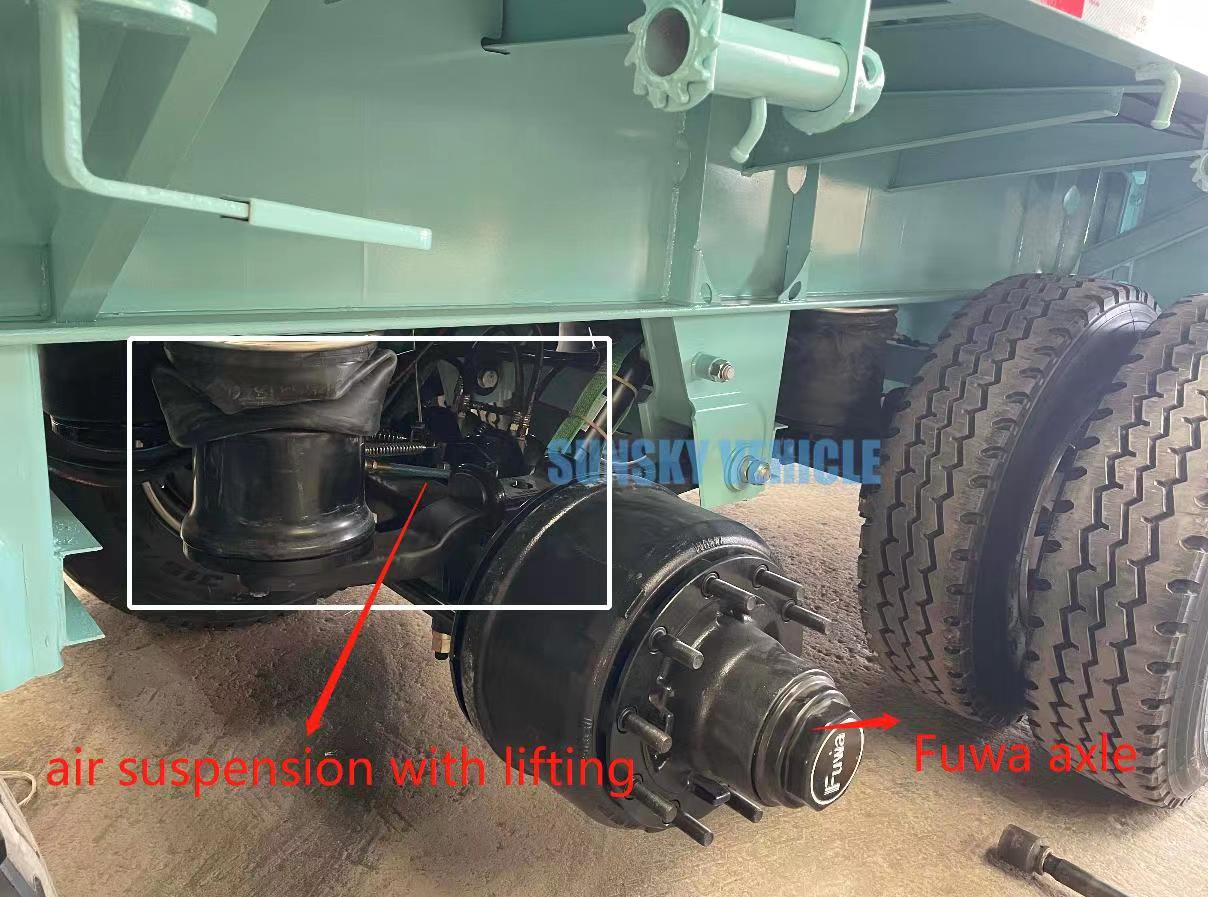
An air suspension's airbag-style air spring is its most noticeable component. The air spring itself is pretty light in weight, the air medium friction in the airbag is low, there is hardly any noise made while it operates, and it outlasts leaf springs by two to three times in terms of durability.
However, utilizing an air spring necessitates providing a rod system that can transmit forces and moments other than the vertical force, making the suspension structure complex. In addition, the air spring has stringent sealing requirements, and its price is also significant.
Air suspension for flatbed trailers is mainly used in high-end industries like delivering dangerous chemicals and precision instruments.
4. Single Point Suspension
These are helpful for trailers that tow weighty loads up to 100 tons. The dampening effect of this single-point suspension is impressive. There isn't much movement when the truck and trailer travel on the highways. Additionally, this lessens the vibrations on your trailer, reducing wear and tear. Naturally, you want durability when you purchase something, especially a costly trailer. Single-point suspensions have only one drawback: their high cost.
Tires
The most crucial step is to examine the condition of the tires. You might be surprised to learn how important your decision in truck tires is to your professional success. Almost everything you do is impacted by tires, including how safe you are in bad weather and how much you pay for gas. It seems sensible that a higher-quality flatbed truck tire will perform better and, over time, help you save money and be more productive. Verify that all the tires were replaced at once. Check to see if each tire is from the same brand visually. Here are two types of tires you consider.
- Tube Tires
- Tubeless Tires
1. Tube tires
A tube filled with air forms the core of a tube tire. The rim and the tire are connected by this tube. The tube's valve inflates the tire and is fastened to the rim hole. The tube air will quickly find its way out when a sharp object pierces the tire. Because the tire is underinflated, the sudden escape of air causes the tire to burst.
2. Tubeless Tires
Although tube-type tires are similar to tubeless tires, tubeless tires lack the inner tube that holds pressurized air. Instead, the wheel's rim and the tire form an air container for holding air. The inner liner, a membrane that tightly seals the air inside the tire and the rim, is attached to the tire's interior wall. A tubeless tire will only have one hole where air can slowly escape if a sharp item puncture it. Due to this, the tire loses pressure gradually, providing the driver ample opportunity to make repairs before it bursts.
Carrying Capacity
The kind of flatbed you buy will depend on how many goods you plan to transport. Flatbed trailers can haul loads weighing between 10 and 80 tons. It would be better if you immediately looked into the local bylaws and legislation governing the maximum permitted load you may transport. The experts at Hale Trailer claim that "many flatbeds offer the option of adding extra axles to meet federal weight restrictions when carrying more oversized freight. Drop deck and step deck trailers are technically flatbeds with different decks attached. However, remember that not all trailer types have the same load capacity. While container chassis are made to withstand more weight, campers might have two or three axles.
Budget
To purchase a trailer, you must consider your ideal spending limit How much you would like to spend against how much you can afford. There are a lot of inexpensive used flatbed trucks for sale, so it's important to look them through to find the ones that fit your budget.
How to Maintenance and Repair a Flatbed Trailer?
While flatbed trailers are prone to frequent problems, regular preventative maintenance is one way to keep them from occurring. Preparing a thorough pre-trip checklist is advisable to ensure that this maintenance plan is followed frequently. When creating your semi-trailer preventative maintenance plan, add the following crucial elements to your list.
- Tires
- Brakes
- Lights
- Electrical
- Suspension
- Fluids and lubrication
- Battery
- Safety chain
How to Hook the Flatbed Trailer with The Tractor Truck?
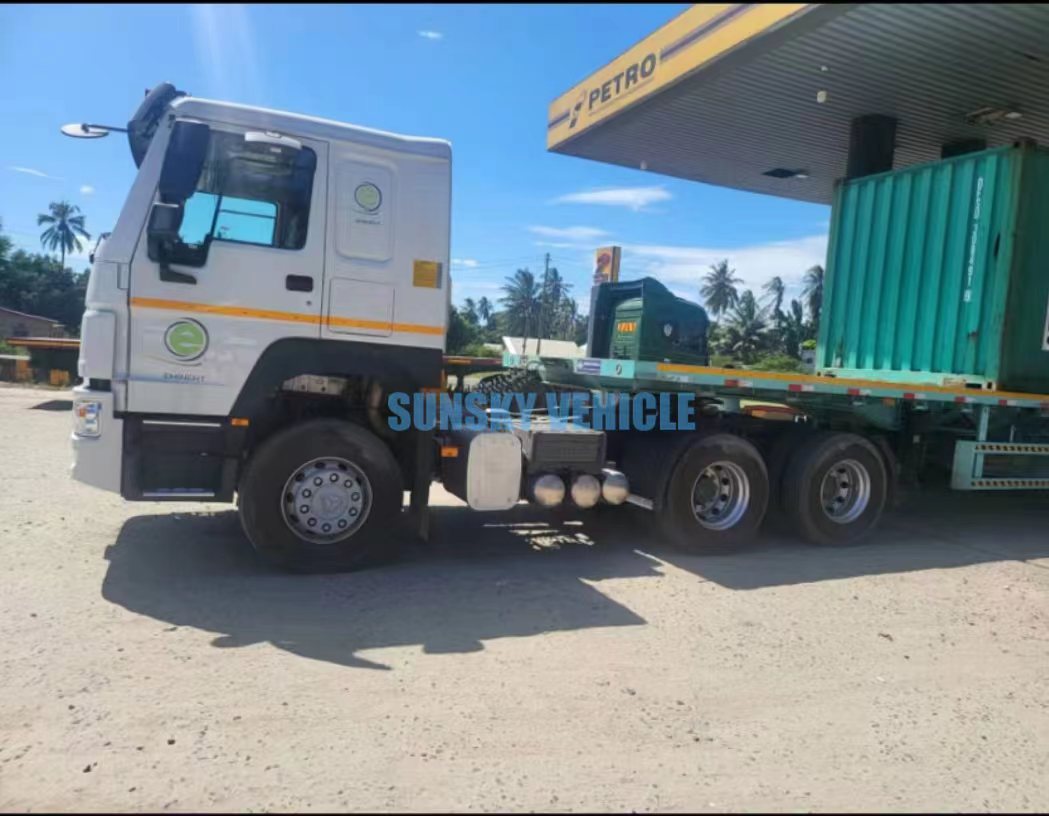
Backing up to the trailer, attaching the coupler, fastening the safety chains, and putting in the electrical harness are all necessary steps in connecting your trailer to your automobile. It necessitates persistence and focus. Here are some steps:
- Finding a friend to assist you is the first stage in trailer hookup. It will be considerably simpler if someone else provides direction outside the car.
- Set up the trailer and position your truck, so it is in a straight line.
- Stop and adjust the trailer coupler height when your car is about a foot from the trailer tongue.
- Back your car up the remaining distance to the coupler while driving carefully and safely. The trailer ball and coupler must be precisely aligned.
- While the emergency brake is engaged and the vehicle is in the park, use the trailer jack to lower the coupler until it rests on the ball. Before falling, you should additionally confirm that the coupler latch is in the upright, unlocked position.
- The law requires safety chains. To create a cradle, they should be linked beneath the coupler in a crisscross pattern. The crisscrossed chains are designed to catch the coupler if it ever separates from the ball.
- Retract the trailer jack after the coupler is in place. The trailer jack must be raised and cleared of the path for towing.
- Connect the wire harness from your car to this trailer. By wrapping the harness around the tongue of the trailer, you can reduce the amount of extra wire between the truck and the trailer. While the harness shouldn't touch the ground, it should still be long enough to allow tension-free rotations.
- Turn on each trailer light individually to check that they are operational while your assistant stands because of them. The left, right, and correct hazards, running, and brake lights should all be checked.
How to Secure a Car on Flatbed Trailer?
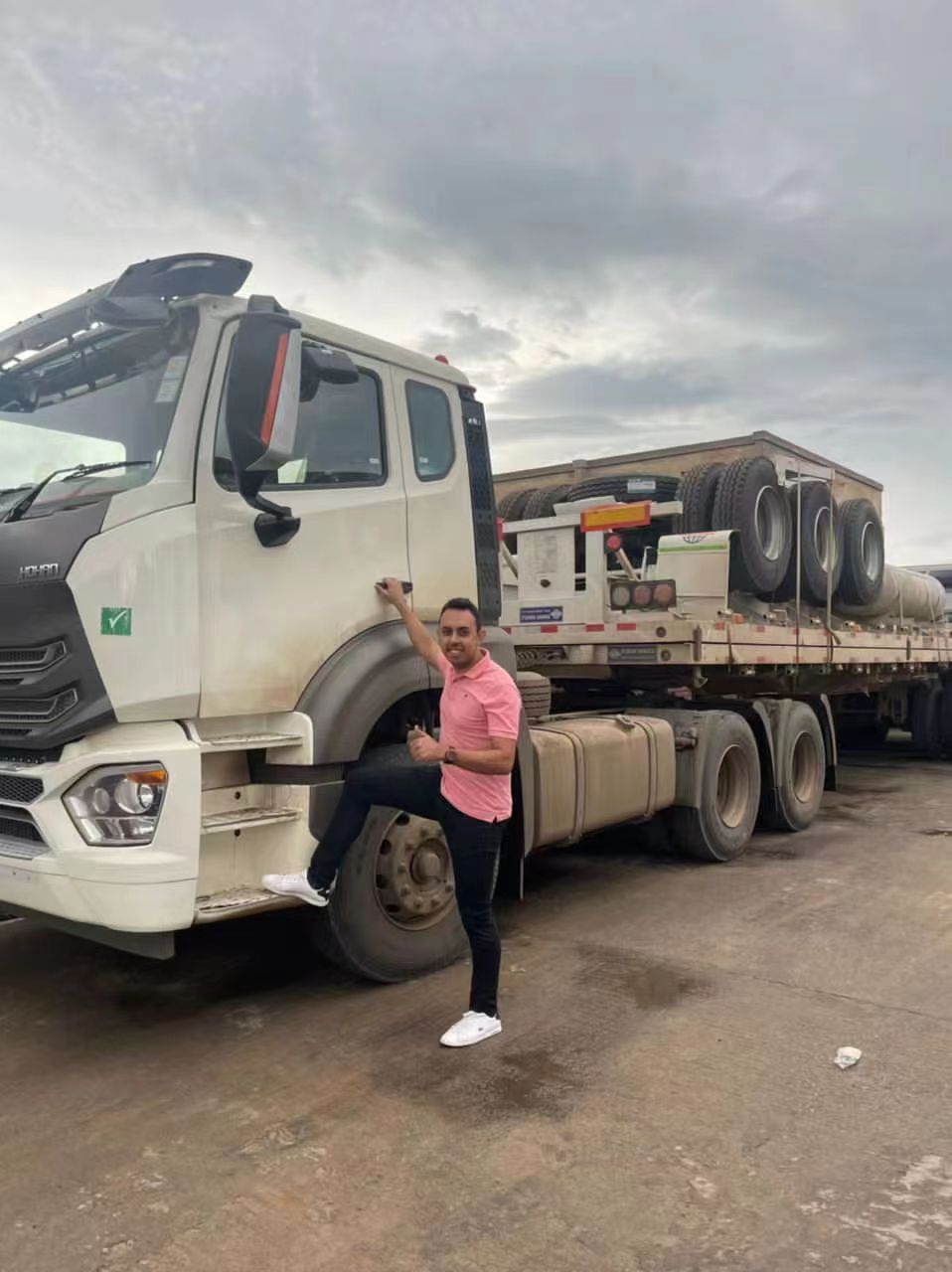
Ratchet straps are ideal for securing a car on a flatbed trailer. These are also tie-down straps made of sturdy, flexible material that can withstand the significant strain. Once the vehicle is in place, you can tighten the straps using a beautifully engineered ratcheting system.
Each set of ratchet straps you employ must be familiar to you. There will be a label on each group indicating the working load limit and break strength. Then, before you begin working, you can determine the maximum load for each ratchet strap.
How to Secure a Motorcycle on Flatbed Trailer?
When a motorcycle is incorrectly secured to a trailer, it may shift, topple over, or even tumble out of the trailer while the trailer is being driven down the road. Learn the proper techniques to secure your motorcycle while traveling on a trailer safely. Consider the following points to understand how to tie a motorcycle on a flatbed trailer.
- As close to the front (near the cab) as possible, park the bike in the middle of the deck.
- Attach the tie-downs to the motorcycle's frame in four places to secure the vehicle (or components, such as the front forks)
- Ensure the bike is stable and angled at a 45° vertical angle. The forks should be gently squeezed, and the straps should be tightly fastened.
- Securing the back wheel
- Verify that there is no slack in any straps and everything is tight.
- Make sure you are in the ready position and have control of the front brake before removing your bike from the deck.
How to Secure a Container on Flatbed Trailer?
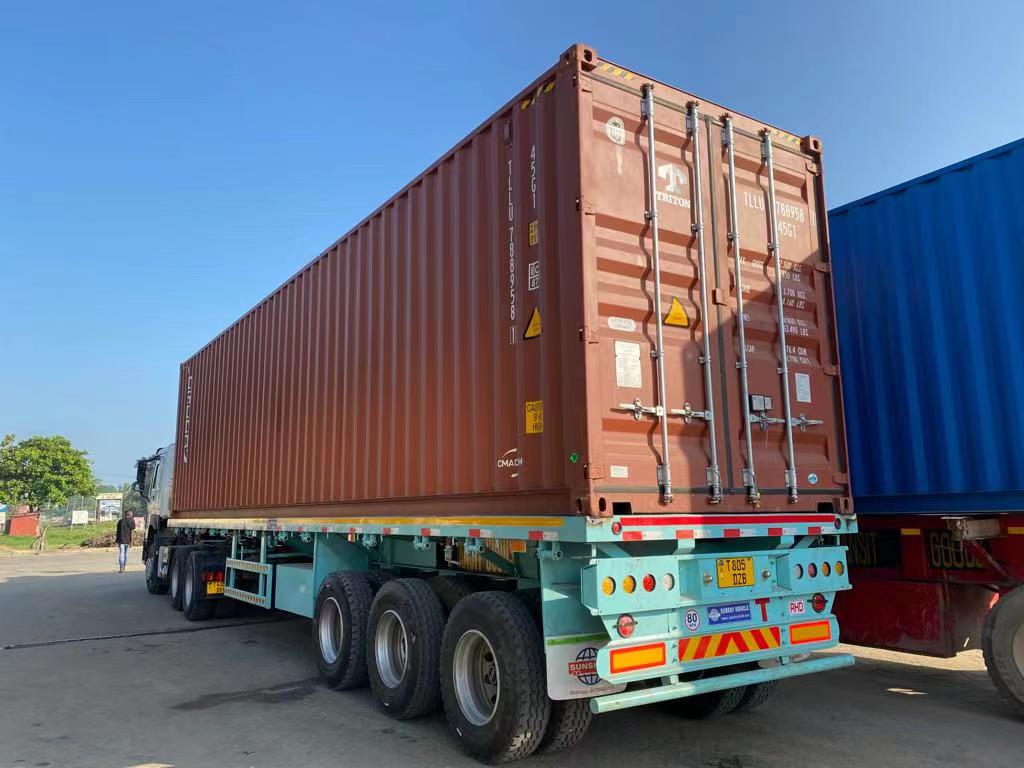
Two forms of tie downs-straps and chains are employed to secure a container to a flatbed trailer. The flatbed is positioned on its lower corners. The corners may also be supported by a structure that can support the weight of the container. Secure the support structure to the vehicle separately.
Securing the container:
- Use at least two straps over the top of a 20-foot container and a chain on the front and back.
- Use at least three straps over the top of a 40-foot container and a chain on the front and back.
How to Secure and Load the Cargo (CEMENT in BAG, Steel pipes, Maize) on the Flatbed Trailer?
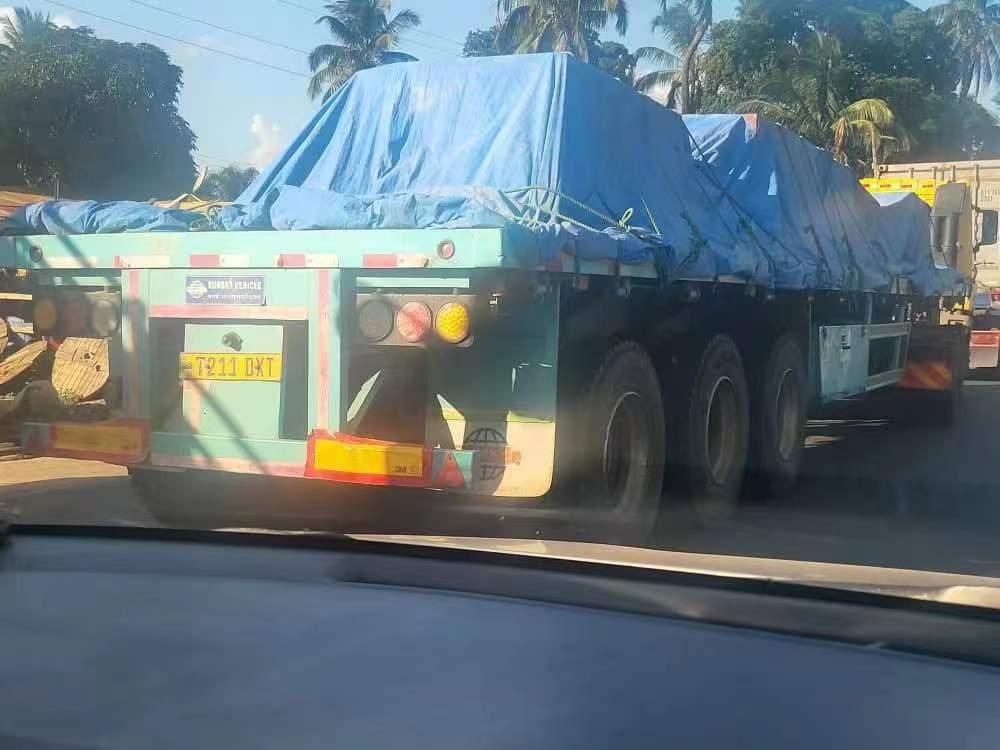
It's crucial to secure freight on a flatbed trailer for safety and ensure you don't lose the load. The following are the top two categories of securement devices:
- chain-and-binder sets
- nylon belts
Follow these easy procedures to tie down a load on a flatbed trailer.
- After estimating the weight of your things, put them in the truck bed. The weight of the cargo as a whole must then be divided by the chain or strap's maximum load.
- Verify where the goods are located on the trailer. At least two of the trailer's side winches should be lined up with each item. If your cargo is anything that chains and binders could harm, it is advisable to place two straps over it. If your items aren't destroyed, secure them with two chains and binders. Keep the edges of all goods covered with leftover carpet to prevent harm to the cargo when you tighten the straps or chains.
- The hooked end of each strap is then threaded through the outside safety rail. The underframe should then be attached to it. Throw the straps up and over the cargo after rolling them up. On the other side of the trailer, pass the straps ends through the winch slot. When the belt is finally wrapped around the winch, continue to twist the winches. Then, to ensure the strap is securely connected, place the winch bar's tip into the winch's side hole and lower the bar as many times as required.
- The chains' hooks must also be threaded through the safety rail, similar to step three. Do the same with the chains as you did with the straps when you flung them up and over the load. Each chain's hooks should be threaded through the safety rail and attached to the trailer's frame on the other side. The chain's excess slack should hang over the edge of the trailer. The next step is to attach a chain binder to each chain. Choose the top link in the chain within your grasp, then fasten it with one of the binder's hooks. Pull the binder's other hook down by grabbing it. Before taking up the remaining slack in the chain and pulling it up as tightly as possible, the binder's handle is raised all the way. The binder's bottom hook can cover any of the chain links. Overlap the end of the binder handle with the winch bar's open end. By pulling the winch bar, you can lock the binder. Make that the chain is tightly wound.
Conclusion
The flatbed trailer you've picked for your company must give you the required flexibility. The trailer may have a tipping motor or a ramp for straightforward loading. A flatbed truck with a forklift attached is an option, as is a flatbed truck with a low profile for hauling tall vehicles. Flatbed trailers are more affordable for your company and more accessible to maneuver than larger trailers.
When choosing between purchasing and renting a flatbed trailer, it is crucial to become familiar with the many types of flatbed trailers. With that information, you can decide which kind of flatbed trailer will suit your transportation requirements the best. A trustworthy transportation firm should always be contacted when making a purchase.
The dimensions and weight capacities of each type of trailer are determined by the relevant trucking standards of the individual semi-tractor and trailer utilized. It is crucial to notice that each type differs from the other types. The approximate weight and dimension capacities are mentioned for all trailers, along with the associated weight. To plan freight and loads, you can use the numbers or figures you see on the list as an approximation guideline. More importantly, you shouldn't base your loading estimates on these numbers if you need to be precise and accurate.
Flatbed trucks are frequently used to tow sizeable agricultural equipment, move huge construction equipment, and bulk freight. Flatbed trailer trucking is the preferred approach for many locations lacking sufficient loading facilities because it does not necessitate a loading dock.

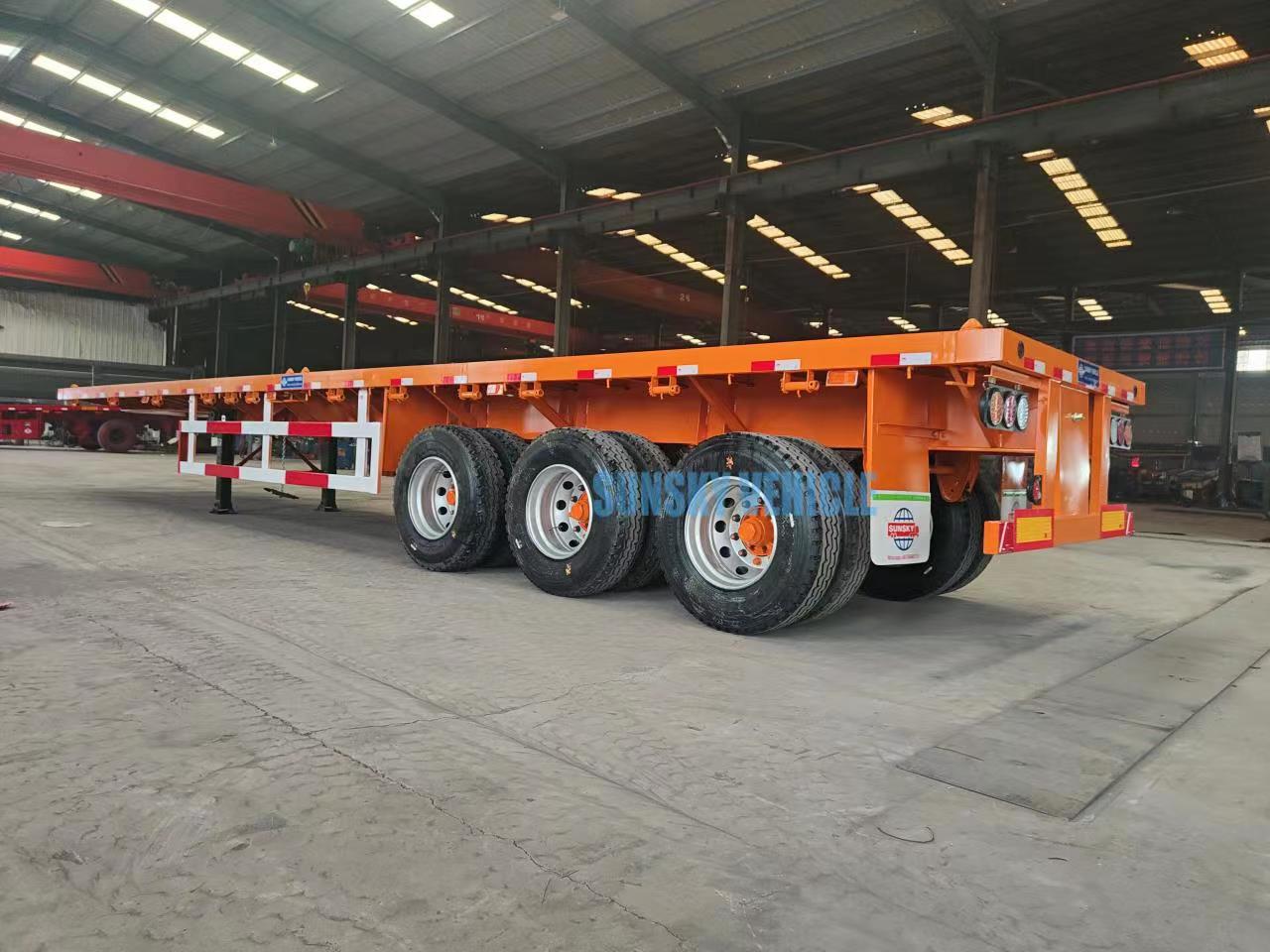

Leave a Comment